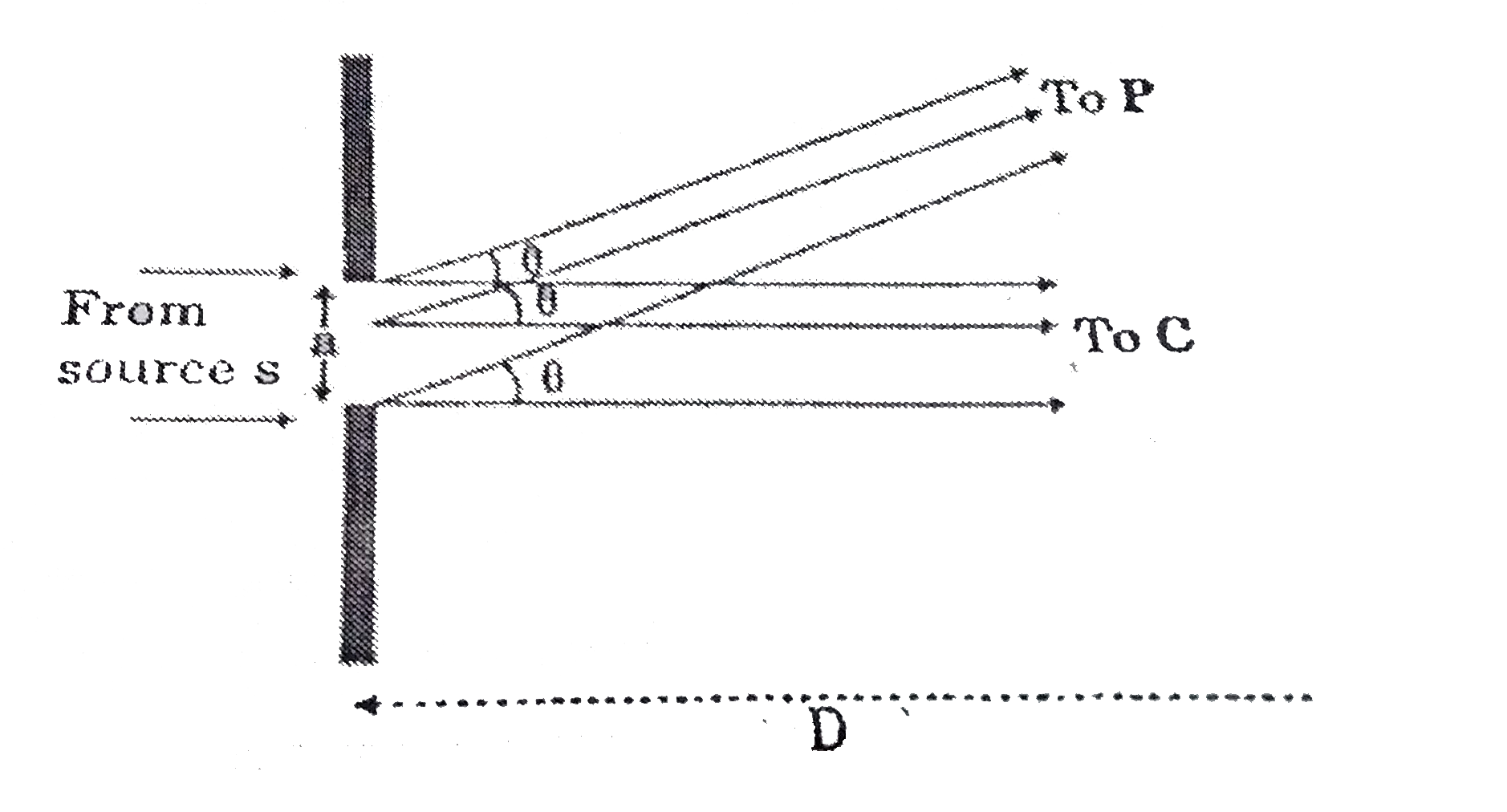The figure, drawn here, shows the geometry of path differences for diffraction by a single slit of width a.

Given appropriate reasoning to explain why the intensity of light is
(i) maximum of the central point C on the screen.
(ii) (nearly) zero for point P on the screen when θ=λ/a.
Hence, write an expression for the total linear width of the central maxima on a screen kept at a distance D from the plane of the slit.
At center of screen C all wavelets :
(i) From slit meet in the same phase so they add constructively to produce a central maxima i.e., bright firnge.
(ii) When θ=λ/a, path difference from two halves of slit will be λ/2 i.e., wavelets from two halves reach at point P in opposite phase, giving a dark or minima.
(iii) β0=2Dλa.
Similar Questions
Four times In Fraunhoffer diffraction by single slit having width d. The perpendicular light of wavelength λ incident on it. The distance between slit and screen is D. If the linear width of central maximum is halve to the width of slit then=.....
View SolutionThe figure, drawn here, shows the geometry of path differences for diffraction by a single slit of width a. Given appropriate reasoning to explain why the intensity of light is (i) maximum of the central point C on the screen. (ii) (nearly) zero for point P on the screen when theta=lamda//a . Hence, write an expression for the total linear width of the central maxima on a screen kept at a distance D from the plane of the slit.
View SolutionFor a parallel beam of monochromatic. Light of wavelength 'λ' diffraction is produced by a single slit whose width 'a' is of the order of the wavelength of the lightl. If 'D' is the distance of the screen from the slit, the width of the central maxima will be
View SolutionThe angular width of the central maximum of the diffraction patternn in a single slit (of width a) experiment, with lamda as the wavelenth of light, is
View SolutionIn a single slit diffraction of light of wavelength λ by a slit of width e, the size of the central maximum on a screen at a distance b is
View SolutionIn a fraunhofer's diffraction by a slit, if slit width is a, wave length λ focal length of lens is f, linear width of central maxima is-
View SolutionWhat is diffraction of light? Explain the formation of maxima and minima due to diffraction from a rectangular narrow slit. Find the width of central maximum and also show that intensity of central maximum is inversely proportional to the width of the slit.
View SolutionIn a fraunhofer's diffraction by a slit, if slit width is a, wave length λ focal length of lens is f, linear width of central maxima is-
View Solution
